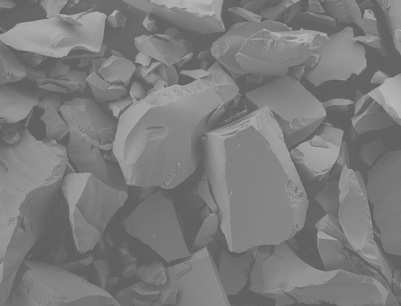Bioactive Glass Properties
|
Bioactive Glass Background
|
Standard bioactive glass is ground and sieved into
a broad particle size range of irregular particles. |
Bioactive Properties
- The bioactive properties of 45S5 glass are due to the ability of the material to form a bone-like mineral layer on its surface (hydroxy-carbano-apatite - HCA). [1] As the bioactive glass particles begins to dissolve in vivo, the ions released from the glass combine with local ions to form an HCA coating on the surface.
- Due to the similarity of the HCA layer to bone mineral, the coating provides an optimal surface for new bone formation and results in a chemical bond between the bioactive glass particles and the surrounding bone.
References
- Hench l. "Bioactive Materials: The Potential for Tissue Regeneration." J. Biomed. Mat. Res.41: 511-518 (1998).
- Xynos I. "Gene-expression profiling human osteoblasts following treatment with the ionic products of Bioglass 45S5 dissolution." J. Biomed. Mat. Res. 55:151-157 (2001).
- Bosetti M. "The effect of bioactive glasses on bone marrow stromal cells differentiation." Biomaterials. 26:3873-3879 (2005).



